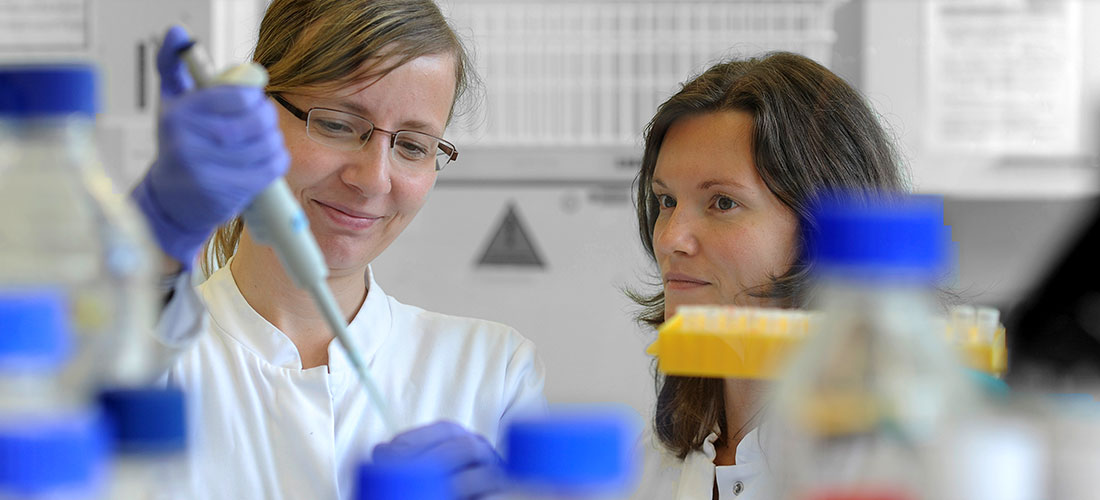A06: The post-translationally modified neuroblastoma proteome as a source for druggable vulnerabilities
In recent years, molecular tumor characterization has provided DNA- and mRNA-based treatment stratification and a mechanistic definition of neuroblastoma subgroups. While this information has fuelled a genomics-based diagnostic biomarker approach to fine-tune risk estimation, new molecular drug targets for patients with high-risk disease have not been sufficiently identified. We hypothesize that new biomarkers and druggable molecular targets can emerge from the comprehensive analysis of the proteome and signaling cascades active in neuroblastoma cells before and after neoadjuvant chemotherapy or in treatment-resistant clones driving tumor relapse. The impact of post-translational modifications (PTMs; phosphorylation, acetylation, ubiquitination) on neuroblastoma evolution or treatment response and resistance has not yet been comprehensively characterized. Project A06 aims to catalog spatial and temporal changes in neuroblastoma proteomes during treatment and integrate these data with (epi)genomics data to characterize tumor evolution and identify therapeutic targets in high-risk neuroblastomas. Our results will then be leveraged to (i) identify key protein and PTM signatures associated with different cellular treatment responses (apoptosis, senescence), cell identities (MES, ADRN) and treatment resistance (Task 1) and (ii) delineate mechanisms directing PTM-dependent processes by genetic and pharmacological perturbations of PTM regulators in neuroblastoma cell lines and PDX models (Task 2). A special emphasis of our analyses will be to understand how key regulators of kinase stress signaling pathways and ubiquitin-mediated protein degradation can serve as diagnostic markers for senescence, and how these regulators can be exploited as drug targets to induce senescence in neuroblastomas (Task 2). This approach will attempt to generate clinically translatable panel assays for key diagnostic signatures for risk or therapy stratification and illuminate druggable vulnerabilities during spatiotemporal evolution in high-risk neuroblastoma (Task 3) to pave the way for the design of new treatment and monitoring strategies and personalized care in the long-term perspective.
PhD positions and place of work: 1
1 wet-lab with interest in bioinformatics (PI: Philipp Mertins, MDC Berlin)



